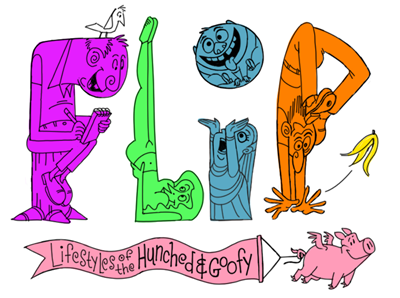 |
| Matchmove: it's all about cameras, baby |
FLIP: What is the matchmove dept, and what exactly do you do?
Amy: As a matchmove or tracking artist, we are responsible for re-creating the actual world camera within a virtual CG environment. The camera that was used on set (while live-action filming takes place) needs to be re-created in the 3d world in order to place 3d objects into the scene seamlessly.
The software of choice these days is 3d Equalizer, and this allows us to place mulitple points through the camera onto the photographic plate in order to create a 3d scene. It is helpful if we have reference photographs from the live-action set, as this allows us to create photogrammetry scenes, where we place the same point in all reference photos, giving that point a real place in space. From there we can make scaled geometry or buildings.
In shots where a cg character, for example, might need to be touching the ground, we need to supply information on where that ground is exactly, and where the building is he is to walk around (for example). We do our work at the start of the cg pipeline, so without matchmove work the rest of the elements cannot be placed accurately in the shot.
FLIP: What movies have you worked on?
Amy: I have been in matchmove for 7 years now and have about 22 credits to my name, most recently Skyfall, World War Z, Black Sky, Jack Ryan and Iron Man 3 and, most memorably, Marmaduke.
FLIP: What are the biggest challenges that the department faces on a project?
Amy: Information really - or the lack of it. If we can get as much information from the live action set as possible, then our job is a lot easier. If we have camera data such as precise lens information, the name of the manufacturer, the exact model used, the film type or the digital media used - and plenty of reference images - then this can really speed up the matchmove process.
Distortion in lenses is a common problem and this means we need to have lens grids shot on set in order for us to un-distort the image. There are so many different types of media on which to film these days, and shooting types are changing too. Zooming and handheld shots require extra information, and each camera comes with its own 'quirks' like the RED camera and the Alexa format with its rolling shutter. It can get pretty technical.
FLIP: What was your favourite project and why?
Amy: I was thinking about this the other day, and it is very hard to choose, but I think down to the fun team we had, I would have to say...Marmaduke! We were a close knit team and, although it involved a lot of overtime and long hours, we all worked together to keep each other going. In the end it may just be another talking dog film, but I think the movie looked great and, for me at least, it was the most fun project to work on.
FLIP: What advice would you give to anyone who wants to break into the VFX business?
Amy: I think these days you have to be more of a generalist to get on in this industry, you need to be able to go where the work is and adapt to the skills needed. If you can be a good matchmove artist with modelling skills and also animation, then that gives you more options for work. Working as a runner is still the fastest way of getting into the industry, if you are a graduate. Training yourself up or taking courses while you work as a runner will give you a good generalist base on which to specialise later.
(Editor's note: For more on the recent trials of the visual effects business, read about the recent layoffs at Cinesite, why we're going green, read FLIP's review of Life of Pi, and read about the wonderful VFX studio that was Rhythm and Hues. You can also find our September 2012 piece on the sad end of Digital Domain.)

No comments:
Post a Comment